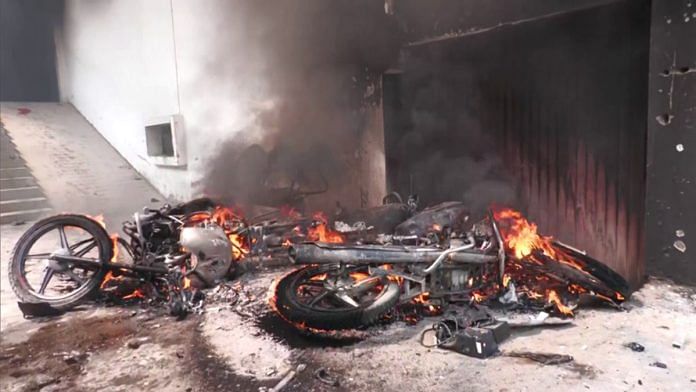


Communal violence erupted in Uttar Pradesh’s Bahraich district recently, as two communities clashed during a Durga idol immersion procession. The violence claimed the life of a young Hindu man, Ram Gopal Mishra.
Mishra’s death is a painful reminder of many such clashes across India. The 22-year-oldjoinsa long list of young lives lost to the senseless cycle of communal violence that plagues the nation. Each victim leaves behinda grieving family—parents who have lost their children, children left without parents, and relatives who must carry these deep wounds for a lifetime.
In UP, I was exposed to many stories about communal riots. And, one thing that strikes me is the difference in how the local communities respond to conflicts on social media. On the ground, I’ve witnessed genuine efforts by local leaders from both sides—senior citizens stepping up to bridge divides, mediating peace talks, and fostering dialogue aimed at lasting solutions. But, sadly, social media seems to operate in a parallel universe, more focused on assigning blame to one side or the other rather than seeking common ground. Many popular accounts on social media seem to often fuel conflicts, feeding into a cycle of polarisation rather than resolution. I believe the reason could be thatthe people behind these accounts seek attention by being part of such a cycle without having any skin in the game, while local people have to face the real situation. These clashes would never affect those on social media in real life.
To start with, we must ask why the narrative of “Muslim areas” even exists in India. While the issue of ghettoisation is real, it does suggest many times that a locality with a majority Muslim population is inherently problematic or different and hence, should not be accessible to other communities of India. Also, there’s a troubling discourse that often frames Hindu processions passing through these so-called Muslim areas as inherently contentious. Accusations are even levelled against such processions, suggesting they are wielded as tools of psychological domination, aimed at subjugating Muslims or provoking unrest.
In the recent case of Ram Gopal Mishra’s death, we saw how this narrative played out on social media. Prominent influencers shared videos of Mishra removing a green flag and replacing it with a saffron one, almost as though attempting to justify or shift the blame for his killing. This comes across as a disturbing form of victim blaming, seemingly excusing violence by suggesting the victim’s actions were provocative.
Also read: Keep doing Hindu-Muslim if you want to come down to 6 seats from 182—Ram Vilas Paswan
Instead of asking why Muslims might feel hypersensitive or on edge during Hindu religious processions in public spaces, a certain section appears intent on suggesting that Hindu processions should avoid Muslim-majority areas altogether. This approach not only sidesteps the underlying issues but also implies an acceptance of segregated public spaces. Imagine if this same logic was applied during Muslim processions. Would we then advocate for restricting these events from passing through Hindu-majority areas? In fact, there are videos where Muslim processions are playing provocative songs and speeches, while passing through many areas and we rarely hear any such retaliatory attack on them.
There’s also the argument that some Hindu processions engage in provocative chants, slurs, and abuses, with some suggesting these events reflect an “Ashvamedha Theory” approach—where the procession either leads to conflict or asserts a psychological dominance. But even if we were to accept that there is some truth to this claim, would it justify a retaliatory killing or attack? This line of reasoning is similar to arguing that cow slaughter or smuggling is more about an intentional affront to Hindu sentiments, would this then justify violence by cow vigilantes?
The reality is that there is a certain lack of understanding or trust between communities that drives a wedge between them. When you already see each other as different or have a doubt of intention, most of your actions would come across as disrespectful or an attack. These fault lines have deep historical roots, shaped by everything from ancient tribal conflicts to the scars of religious wars and invasions.
While regressive and archaic beliefs within the Muslim community already pushed them to segregation and filled them with distrust, modernity could have been a solution of them accepting diversity and coming out of the segregation mindset. But sadly, those who should be working to reform it are more concerned with shifting blame on others and painting themselves as the victim. It only fills the community with more suspicion toward the other community. Unfortunately, the other side is also losing patience. With social media-driven polarised narrative, there is reducing space for giving benefit of doubt and willingness to create a space for honest communication. As trust erodes, so does the willingness to engage in honest communication that could bridge the divide.
Amana Begam Ansari is a columnist. She runs a weekly YouTube show called ‘India This Week by Amana and Khalid’. She tweets @Amana_Ansari. Views are personal.
(Edited by Aamaan Alam Khan)



